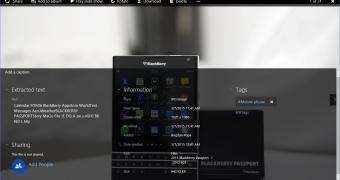Optical Character Recognition (OCR) is one of the features that Microsoft’s pushing for very hard, offering users the possibility of extracting text and layout information from any image almost instantly, obviously depending on the used language and the amount of text.
OCR is already part of some Windows applications, and Microsoft has worked to make it a critical part of the operating system too, with the November Update bringing support for four new languages. At this point, OCR supports a total of 25 languages, Microsoft says.
“This technology has been heavily tested inside Microsoft for years. It’s used in major products like Word, OneNote, OneDrive, Bing, Office Lens, and Translator for various scenarios, including image indexing, document reconstruction, and augmented reality,” Microsoft explains.
Helpful for extracting text from OCR documents
Certainly, OCR can really come in handy when working with PDFs or scanned documents, and this is one of the reasons Microsoft is working so hard to make it available as part of as many software solutions as possible, including Windows 10.
In OneNote, for instance, OCR is available since 2015, so you can easily copy and paste a photo in a document, right-click it and select the option that reads “Copy text from picture.” OCR automatically takes care of everything and extracts the text for you.
Additionally, Microsoft is also offering guidance to developers who want to use OCR in their own apps, with code samples and documentation available on GitHub and MSDN.
“This work is the evolution of Microsoft OCR library for Windows Runtime, released on NuGet in 2014. If you used this library in an app for Windows/Windows Phone 8.1, moving to the new OCR API in Windows 10 will be straightforward,” it says.
With Windows 10 now being pushed as a recommended update, it’s expected that the number of users who’d discover these features would grow significantly in the coming months. Microsoft has a goal of bringing Windows 10 on 1 billion devices by 2017, so OCR adoption could also benefit from this boom and increase the number of developers and users embracing it.

 14 DAY TRIAL //
14 DAY TRIAL //